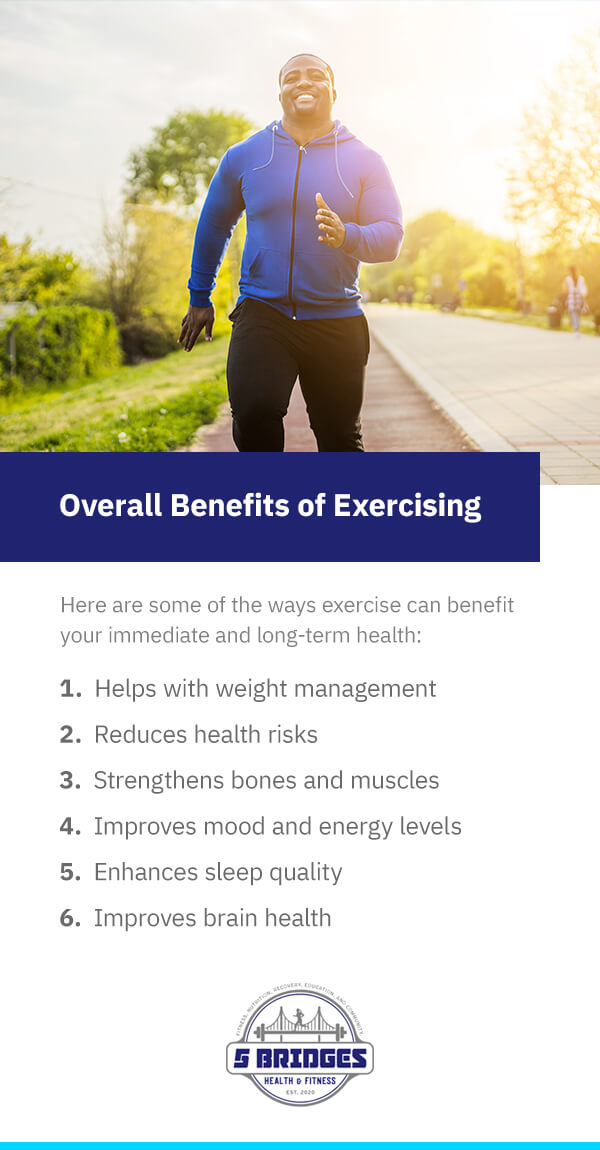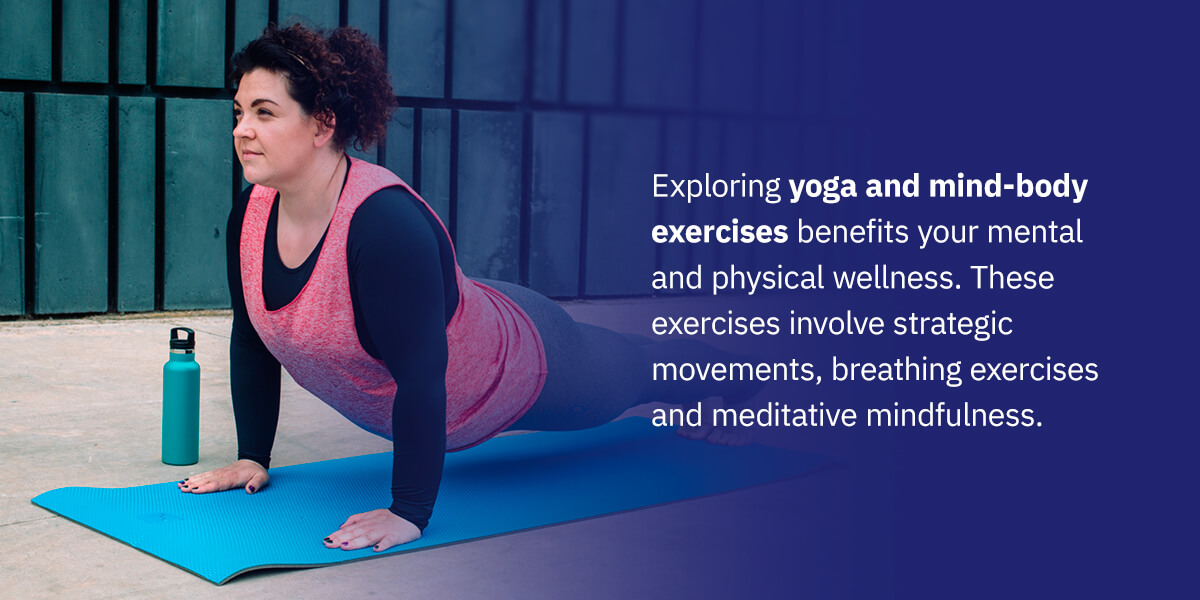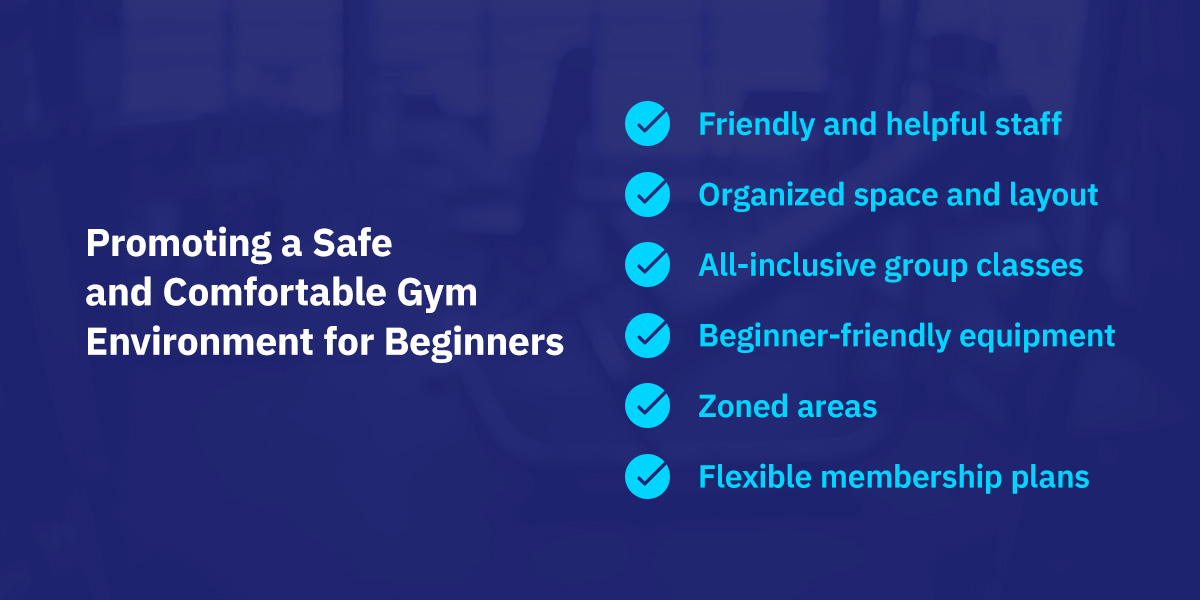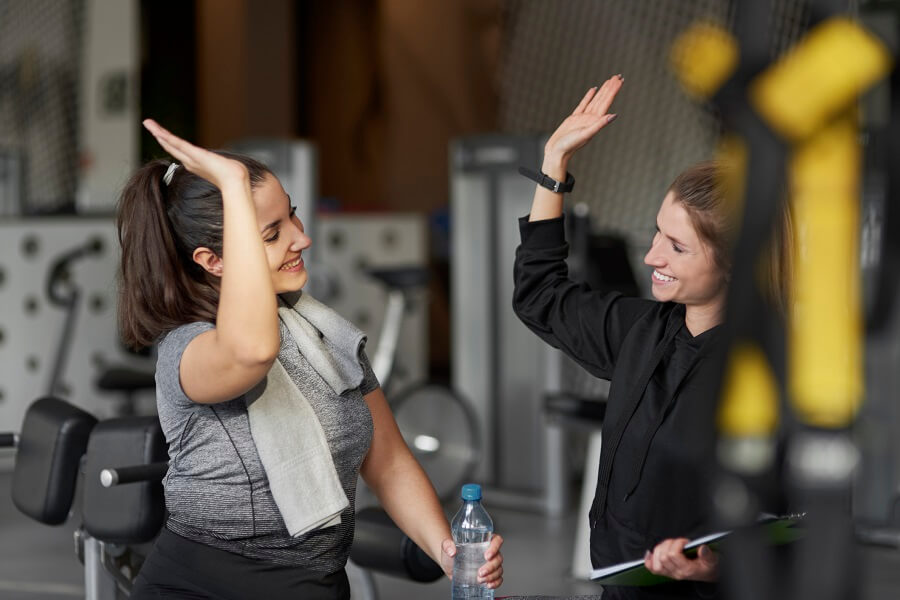Fitness - Workouts for Overweight Beginners
Fitness – Workouts for Overweight Beginners
Posted on: August 8, 2023 in Beginners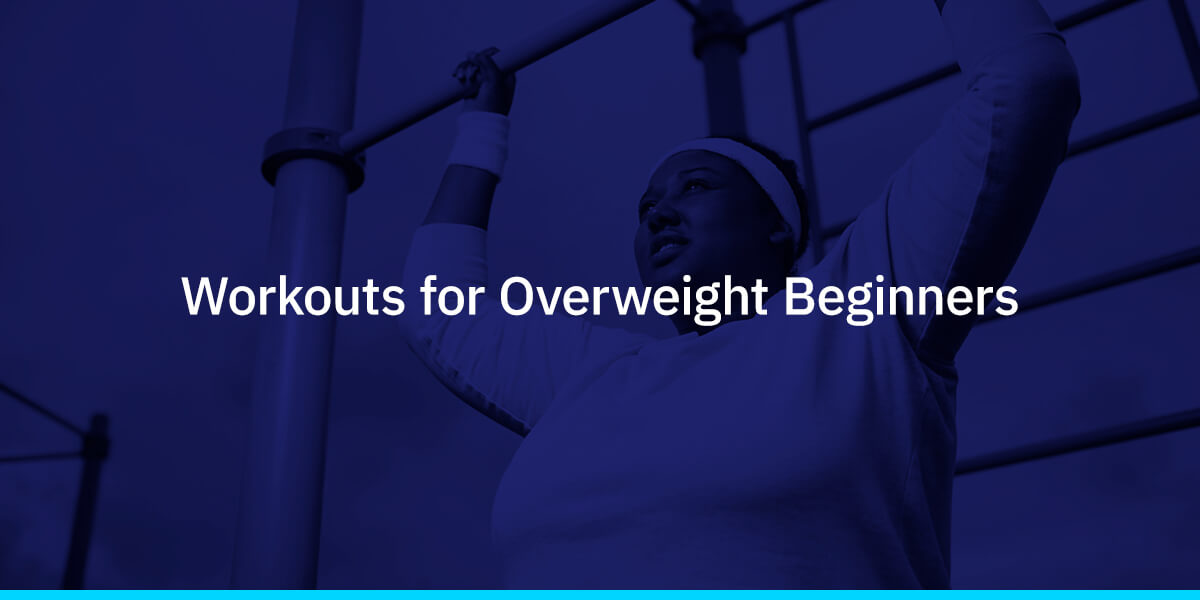
No matter who you are, how much you weigh or what medical conditions you have, you can always find exercises to safely improve your physical health. To help you be the healthiest version of yourself, we’ve compiled some of the best exercises to try when you’re new to working out and want to learn how to start exercising when you are overweight.
Overall Benefits of Exercising
Exercise aids every aspect of your health, providing immediate and long-term benefits. As such, working out is a staple of any healthy lifestyle. Here are some common working out benefits:
- Helps with weight management: The two most significant factors in weight management within your control are diet and exercise. One part of healthy weight loss is burning more calories than you consume. Research shows that exercise is essential to maintaining a healthy weight, especially when you combine aerobic exercise with resistance training.
- Reduces health risks: Along with a healthy weight, exercise reduces your risk of myriad chronic diseases. Some diseases you can help avoid through exercise include cardiovascular disease, hypertension, type 2 diabetes, Alzheimer’s disease and several cancers.
- Strengthens bones and muscles: While it’s common knowledge that exercise strengthens your muscles, research also shows that exercise strengthens bones by increasing bone density. This benefit is critical as you age because our bones weaken over time.
- Improves mood and energy levels: Have you ever experienced a post-workout high? This euphoria mainly occurs due to increased endorphins released after exercise, leaving you feeling rejuvenated. If you’re feeling sluggish, one way to lift your mood is to exercise. Regular exercise also reduces your risk of depression in the long term.
- Enhances sleep quality: When you work out often, you’ll likely notice that you sleep better. Rather than tossing and turning all night or waking up early, you can get a solid night of rest and feel refreshed.
- Improves brain health: Regular exercise can delay the effects of aging on brain health by improving cognitive processes.
Workouts for Beginners With Extra Weight
If you’re a newcomer to the fitness world, it’s crucial to take your fitness journey slowly. Otherwise, you can increase your risk of an exercise-related injury. Additionally, you may be frustrated when you don’t progress as quickly as you envisioned.
By taking each workout session slowly, you can build up your skills and gradually see changes in your body. Here are a few workout ideas to help establish a routine that works for you:
Water Aerobics
Water exercises are excellent for individuals who experience limited mobility, painful joints or have injury concerns.
The buoyancy of water reduces your body weight and absorbs shock away from your joints. At the same time, the friction between your body and the waves creates resistance. In this way, water aerobics engages your muscles more fully, burns more calories, and reduces joint impact. These exercises for overweight individuals improve balance and provide greater comfort.
There are several water exercises to try. Some examples include:
- Aqua jogging: Also called deep water running, aqua jogging mimics running motions while underwater. Unlike regular jogging, you don’t touch the ground with aqua jogging. To perform aqua jogging, you wear a buoyancy belt that keeps your head above water and allows you to run in place while floating. A typical aqua jogging session lasts 30 to 45 minutes, including a five to 10-minute warm-up and several rounds of low and high-intensity jogging.
- Side leg lifts: Using a noodle, a side leg lift tones your inner thighs and engages your core muscles. To perform a side leg lift, tie a pool noodle into a knot and place one foot through it. Keeping that leg straight, slide into the pool until your feet are on the floor. Standing tall, lift the leg with the pool noodle to the side at a 45- to 60-degree angle. Bring the leg back down with your core engaged and repeat 10 to 12 times.
- Arm curls or lifts: To perform this exercise, stand in the middle of the pool with a pair of water weights, hold your arms in front of you and curl the weights up and down, repeating until you feel fatigued.
- Jumping jacks: Doing jumping jacks in the water provides extra resistance, increasing the cardio benefits. Perform them as you would on land — make sure the water’s surface is chest level. Do one to three sets of eight to 12 reps.
- Walking in the water: You don’t need to do an involved exercise to enjoy water aerobics. A simple stroll around the pool also counts. Ramp up the intensity by quickening your pace or adding water weights as you walk.
Modified Squats
Squatting strengthens your back muscles, glutes and quads and reduces your risk of knee injuries. Starting with modified squats is best for an overweight person until you build the core strength to perform full squats. Eventually, you can add weights.
With a regular squat, you start with your feet slightly wider than hip-width apart and slowly lower your hips until your thighs parallel the floor. However, overweight people or people with bad knees can have trouble performing regular squats.
Here are three different ways to modify squats:
- Wall squat: These are ideal for individuals with knee issues. To perform one, lean against a wall with your feet slightly wider than hip-width apart. Bend your knees and take two slow steps away from the wall while keeping your back against the wall. Slide down until your knees are bent at 90 degrees. Hold the position as long as you can and repeat it 10 times.
- Sit-to-stand squat: To perform a sit-to-stand squat, sit on the edge of a chair with your legs a little wider than hip-width apart. Once you’re ready, stand up with your knees behind your toes and slowly lower your hips by bending your knees. You can sit back on the chair or hover just above until you feel fatigued. The chair serves as a support system to brace your fall and help you get started with squats.
- Stand-to-sit squat: Stand in front of a chair and raise both arms perpendicular to your shoulders and parallel to the floor. Your palms should face the floor. Bend your knees and slowly lower your hips until they tap the edge of the chair, then stand up again. Repeat this movement 10 to 15 times.
Walking
This workout requires little instruction, as you likely perform it daily! As a low-impact aerobic exercise you regularly perform, walking is one of the easiest ways to start working out. Depending on your fitness level, you can walk as little or as much as you want, with or without assistance. For individuals with excess weight, even walking slowly will burn calories as you use more energy to move your body.
To start with a walking routine, find a comfortable pace and aim to walk for approximately 45 minutes daily. Do a treadmill workout or find an outside route with stimulating scenery. As you find that goal easier to fulfill, ramp up the intensity to maximize the health benefits of walking.
Here are some ways you can do so:
- Increase your pace and duration.
- Add some weights or wear a weighted vest.
- Try Nordic walking, which involves two ski poles and utilizes your whole body.
- Find routes with varied terrain, forcing you to walk uphill and downhill.
- Increase the speed and incline on the treadmill.
- Pump your arms to utilize your whole body.
- Incorporate resistance training intervals, such as modified squats, lunges, push-ups, planks or step-ups.
- Climb stairs.
Once you master walking as a form of exercise, you can transition into jogging and running — look for running programs in your area to connect with your community for extra support.
Recumbent Bikes
A recumbent bike is a stationary bike that’s easier on your joints and back than upright stationary bikes because the seat puts your body in a more natural position. Participating in indoor cycling provides many health benefits.
Exercising with a recumbent bike improves cholesterol, lowers blood pressure, enhances aerobic capacity and promotes weight loss. Spending time on a bike is one of the best workouts for losing weight.
Yoga and Mind-Body Exercise
Exploring yoga and mind-body exercises benefits your mental and physical wellness. These exercises involve strategic movements, breathing exercises and meditative mindfulness. Some examples of mind-body exercises include Tai Chi, yoga and Qigong. Although plus-size individuals may find some yoga and mind-body exercise movements challenging, each type has movements and exercises accessible to people of every shape and size.
Lift Weights
While aerobic exercises are great for losing weight, they’re most effective when supplemented with resistance and strength training. Research shows that heavier individuals are better at strength exercises, and weight lifting increases lean muscle mass and decreases visceral and total body fat.
You can lift free weights in numerous ways, from bicep curls to lateral arm raises. If you strength train at a gym, a personal trainer or fitness instructor can show you which weight machines to use and how to adjust them for your size and fitness level.
With free weights, here are some strength-training exercises you can try in your gym’s weight room:
- Shoulder press: Sit or stand with a dumbbell in both hands, face your palms forward and extend your arms to the side with your elbows bent at 90-degree angles. Keeping your back straight, lift the dumbbells over your head until your arms are almost straight. Slowly return your arms to the original position and repeat one to three sets of 10 to 12 reps.
- Seated chest press: With a dumbbell in both hands and your palms facing the floor, lift the weights to your chest. Breathe out and extend your arms in front of you until they’re fully extended. Avoid letting the dumbbells touch, and don’t lock your elbows. Pause briefly after extending your arms, bend your elbows and return your arms to the original position. Do 10 to 12 reps and one to three sets.
- Bicep curls: Sit or stand with a dumbbell in both hands, elbows bent at your side and palms facing the ceiling. Curl the dumbbells toward your shoulders by bending your elbows without moving them from your side. Reverse the curl and repeat one to three sets of 10 to 12 reps.
- Tricep extensions: Stand or sit on a bench, and hold one dumbbell with both hands. Lift the dumbbell over your head and fully extend your arms without locking your elbows. With your elbows by your ears, bend them to a 90-degree angle and lower the dumbbell behind your head. Slowly straighten your arms to raise the dumbbell above your head again. Repeat one to three sets of 10 to 12 reps.
- Lateral raises: Stand tall or sit with a straight back and a dumbbell in both hands. Keep your arms at your sides and your palms facing your body. Raise your arms to the side, keeping them straight until they parallel your shoulder. Breathe as you lift and breathe out as you lower your arms to the original position. Repeat this exercise one to three times with 10 to 12 reps.
Promoting a Safe and Comfortable Gym Environment for Beginners
Starting a fitness routine can be daunting, especially if you’re trying to exercise while overweight. It’s easy to lose focus and be sidetracked. A safe and comfortable gym environment helps you stay committed.
These factors contribute to a warm and welcoming gym setup that will make you return:
- Friendly and helpful staff: The staff is your first point of contact when you enter a gym, so if you’re well received, you’re likelier to stick around and ask for help. A poor first experience may deter you from joining or returning. Staff should explain their personal training programs and guide you on using gym equipment correctly, which is often why individuals don’t join. If they have a suggestion box, use it to point out what they’re doing well and areas for improvement, as this promotes staff-gym member engagement.
- Organized space and layout: Beginners may feel overwhelmed when equipment is cluttered or a gym lacks signage. A well-organized gym with clear signage and instructions on using the equipment helps you navigate the floor, instilling confidence as you familiarize yourself with the layout.
- All-inclusive group classes: Explore group classes that accommodate all fitness levels. Instructors should be approachable and guide newbies on proper techniques without isolating anyone.
- Beginner-friendly equipment: The right equipment makes a difference for beginners. If you’re trying several new exercise routines, variety helps you decide what you’re comfortable with. Equipment should have easy-to-follow instructions to facilitate a smooth workout, and staff should be accessible to demonstrate it.
- Zoned areas: A dedicated workout area for beginners helps you ease into the new gym environment. As you gain confidence, you can move on to more complex equipment.
- Flexible membership plans: Everyone should be able to choose an appropriate gym membership plan that suits their budget and other needs — especially beginners because they can potentially become long-term clients.
How 5 Bridges Health & Fitness Can Help
At 5 Bridges Health & Fitness, we have personal trainers in Harrisburg for every life stage and fitness level who support your health and fitness transformation journey. With our proprietary fitness consultations, using 3D body scanning, functional movement screening and other fitness tests, you can know exactly what exercise program and diet plan your body needs to thrive. Better yet? You can request a free demo with a personal trainer to kick off your fitness journey.
In homage to the five bridges that link Harrisburg, Pennsylvania, across the Susquehanna River, our fitness program philosophy is based on our “five bridges” to a healthy lifestyle. Those five bridges are:
- Nutrition
- Fitness
- Education
- Recovery
- Community
Each bridge is essential to living a healthy life. Our membership plans are geared toward helping you find success with them.
Learn More About What 5 Bridges Health & Fitness Offers
If you think you could benefit from a certified personal trainer, we invite you to learn more about how we can help at 5 Bridges Health & Fitness. Our fitness center has amenities to help you reach your fitness goals. In addition to personal training, we also have a variety of group classes.
Launch your health and fitness transformation with 5 Bridges Health & Fitness today!


